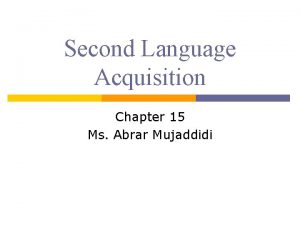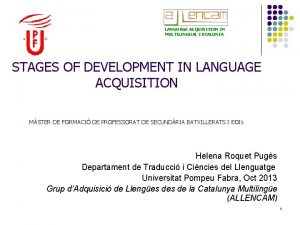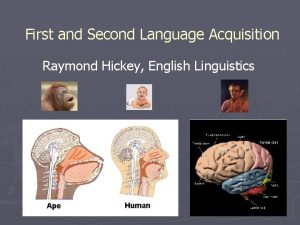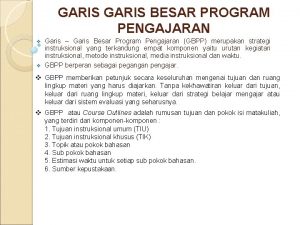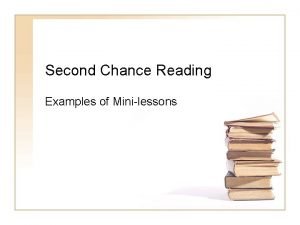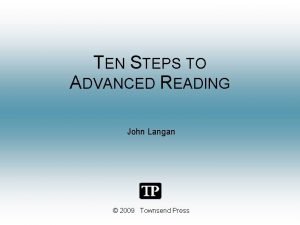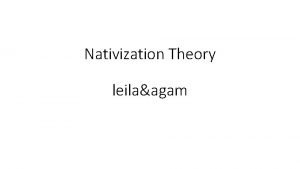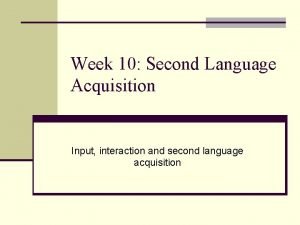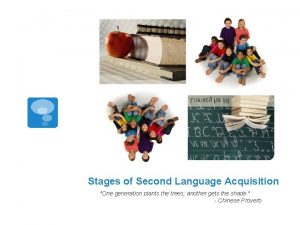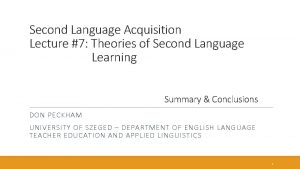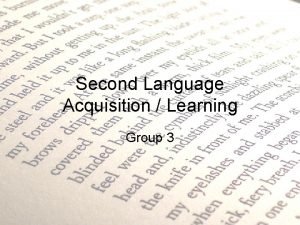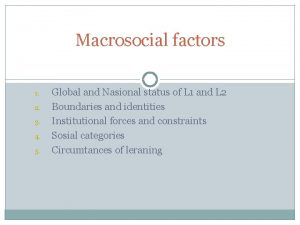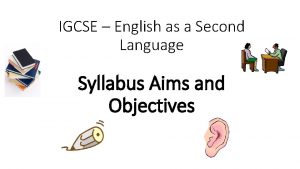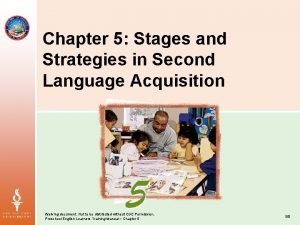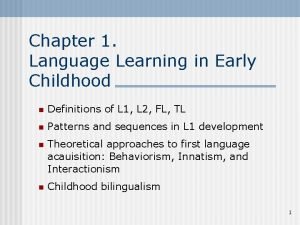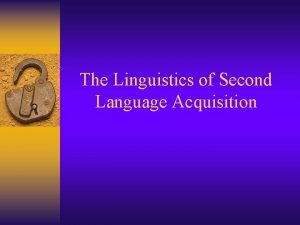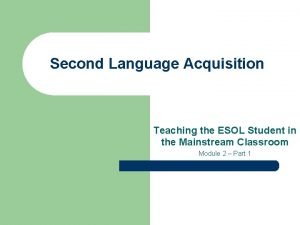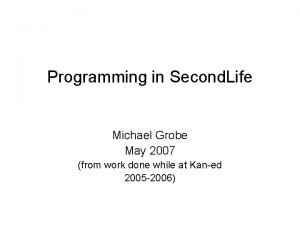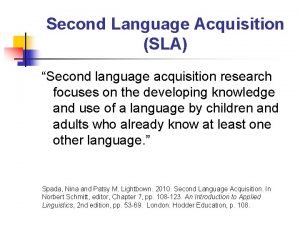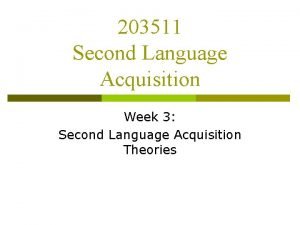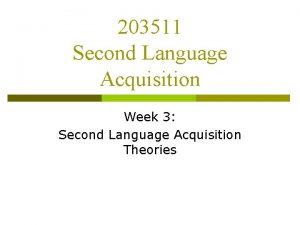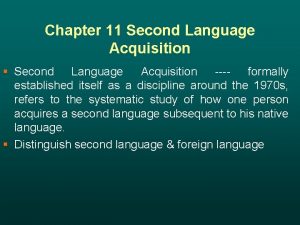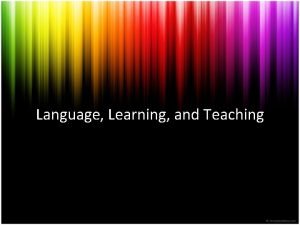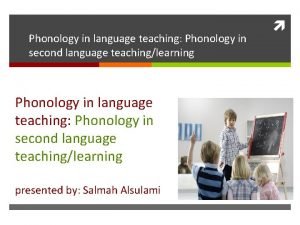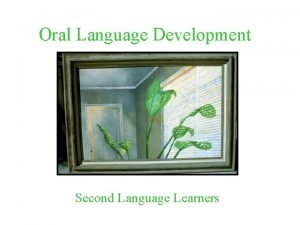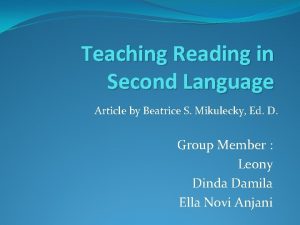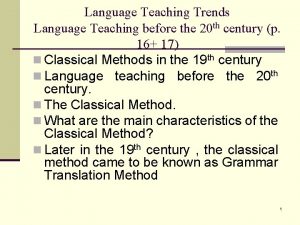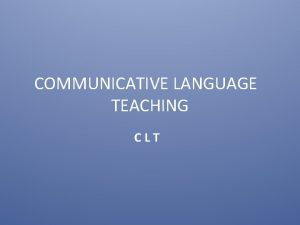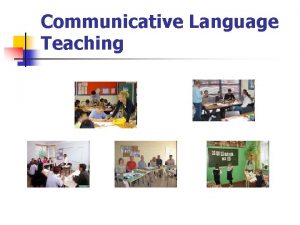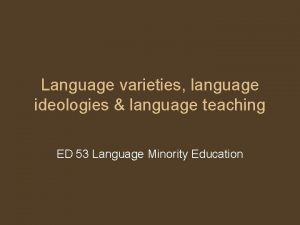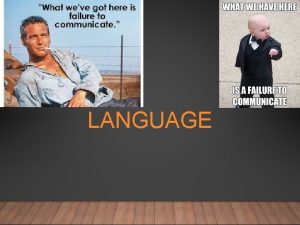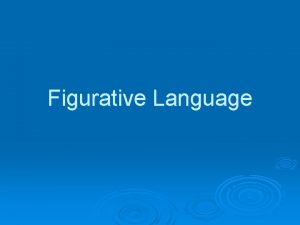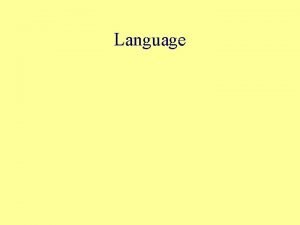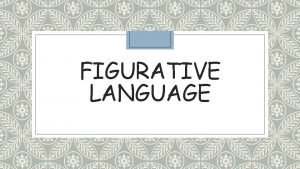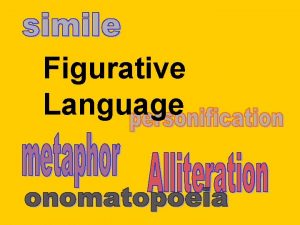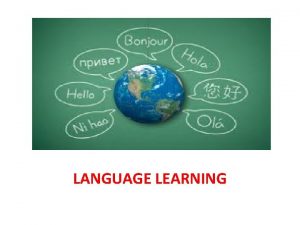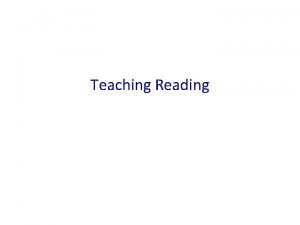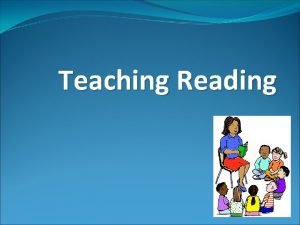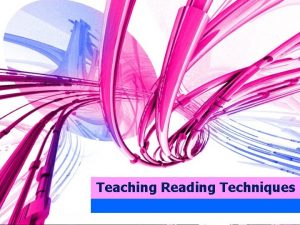Second Language Reading Teaching Reading OUTLINE 1 Reading

























- Slides: 25

Second Language Reading: Teaching Reading

OUTLINE 1. Reading in a Second Language. Differences between reading L 1 and L 2. 2. Type s of skills Higher-level processing skills Vs. Lower-level processing skills 3. Skills for an efficient reading - Explanation - Flexibility - Improving reading speed - Word attack skills

- Reading for plain sense - Understanding syntax - To recognize, interpret and understand 4. Conclusion

Second Language Reading? ? - Interest in Second Language Reading has increased DRAMATICALLY in the last years WHY? ? ? due to the increasing recognition that reading abilities are critical for academic learning, and that L 2 Reading represent the primary way that L 2 students can learn on their Reading is complex and the development of fluent reading abilities by L 2 students is a challenging undertakinng

Reading Purpose In academic setting the main purposes for reading are two: Reading for understanding and Reading to learn Under both it is possible to say. . . Comprehension. . . occurs when the reader extract and integrates various information from the text and combines it with what is already know ( Koda, 2005: 4) Reading Require: phonological, morphological, syntactic, semantic and discourse levels, and also engages in goal setting, text-summary building, interpretive elaborating from knowledge resources , monitoring and assessment of goal achievement, adjusting processing to enhance comprehension , and repairing comprehension processing as needed.

Difficulties in Reading L 2 ●L 2 readers exhibit the full range of variation that can be found for L 1 readers. ●L 2 readers are usually acquiring a complex cognitive ability that distinct from L 1 reading. ●L 2 readers do not have the same language resources and they do not share all the social and cultural assumption and knowledge bases

Differences between L 1 and L 2 In some cases the differences are matters of degree; in other cases there are strong qualitative differences between the two motivate important research question and instructional practices. Mayor differences can be categorized according to three groupings ●Linguistic and processing differences ●Individual and experiential differences ●Socio-cultural and institutional differences

Different in linguistic and Processing Differences ●Differing amount of lexical, grammatical, and discourse knowledge at beginning stages of L 1 and L 2 reading. ●Varying differences across any two language and varying language-transfer influences. ●Interacting influences of working with two languages ●Varying L 2 proficiencies as a foundation for L 2 reading

Individual and Experiential Differences • Differing levels of L 1 reading abilities among the L 2 students • Differing motivation for reading in the L 2 • Differing language learning resources for L 2 readers

Socio cultural and institutional factors ●Differing socio-cultural background of L 2 readers • Differing ways to organize discourse and text in L 1 and L 2 settings. • Differing expectation of educational institutions in L 1 and L 2 settings

Reading Processing Skills TWO TYPES LOWER-LEVEL PROCESSING SKILLS Word recognition and graphophonic processes. Prerequisite for the higher-level skills. HIGHER-LEVEL PROCESSING SKILLS Pulse para editar los Syntactic and del semantic processes. formatos texto del esquema Segundo nivel del More variation of difficulty. esquema Tercer nivel del esquema There are many taxonomies. Cuarto nivel del esquema Quinto nivel del esquema Sexto nivel del esquema Crucial in reading comprehension. Orthography is crucial in the process of word recognition because first language skills are applied to second language. The same happens with the phonology, which plays a very important role when languages have different orthographic systems.

Efficient reading To read obtaining satisfactory results by using the least effort. Two criteria: understanding and time. -Skills for an efficient reading • Knowing what you want from reading • Choosing the right material • Using the text effectively

Flexibility KEEP IN MIND how much you need to read in order to satisfy your purpose, ALWAYS. Helps students to choose which parts ignore and which study closely. Some techniques - Scanning: a fast research in the text for A SPECIFIC PIECE OF INFORMATION or TO GET AN INITIAL IMPRESSION of whether the text is SUITABLE FOR their PURPOSE. - Skimming: a fast research in the text TO DETERMINE ITS GIST and to know if it is RELEVANT FOR OUR own WORK. - Making use of all the resources in the text enables you to OMIT IRRELEVANT sections.

Improving reading speed Reading involves the mind and physical activity: vision and the movement of the eyes. Their relationship are closely linked.

- Training students for speed reading • Skim through the text before beginning to obtain an idea of what it is about. • Choosing texts for speed practice: As the time needed depends on its density, students must be trained with an easier text when the language is familiar. It is really important not to give them a text when they have lot of unfamiliar vocabulary. • The speed expected must be controlled by the teacher and the students in order to have an idea of the student’s improvements. • The reader must have a balance between speed and comprehension. • Bad habits which students must prevent are: Subvocalizing (forming the words you are reading); finger-pointing; regressive eye movements. • Teachers can help their student to improve their reading speed by using a card guide; projected texts and computers.

Word attack skills The vocabulary problem The use of a dictionary is natural, comprehensible and advisable in some circumstances but its use is not recommendable. The students interrupt his thinking when he uses it. Lexical items A word or group of words with a meaning that needs to be learnt as a unitary whole. Some lexical items consist of more than one word (phrasal verbs) and there are identical words have different meanings.

Active, receptive and throwaway vocabulary - Active words: those that you know well enough to use yourself. - Receptive words: those that you recognize but you cannot use because you only know how to use it by the context. - Throwaway words: Those that we can ignore depending on the context, the student’s level and the reasons for reading.

Learning when to ignore difficult words The teacher’s responsibility - to help students to recognize what they do not understand - locate the sources of difficulty; - develop strategies for coping with the difficulty - convince their students that ignoring new words is both acceptable and necessary - give them some materials in order to students will be able to identifying whether a word could be ignored. What makes words difficult? Words with several meanings sub-technical vocabulary superordinate words idioms irony. .

Structural clues for word attack skills - Grammatical function: By looking at the position of a word in a text, we can establish its grammatical category. There would be many possible meanings but when they are considered with the context, the possible meaning turn limited. - Morphology: Students need to know which affixes can combine with the bases and its consequences (changes in spelling or pronunciation). they also need to know the differences and definitions of complex words and compounds. - Interference

Reading for plain sense -How to use. . . bottom-up strategies to interpret difficult texts. -This involves getting to grips with the syntax an so on, making use of top-down insights to weigh up competing interpretations. -Finally, you assess its plausibility using top-down means.

Understanding syntax Identify …the cohesive elements and find out what each refers to. Rewrite. . . the sentence as two or more sentences by removing cocoordinating conjunctions such as and, but, or. Find. . . the nouns and remove any items following them which are part of the same noun group. Search. . . the text for nominalizations and if necessary establish what proposition each implies. Identify. . . the verbs and use the ‘Who/what does what? ’ technique to find the subject/ object or each.

Recognizing and interpreting cohesive devices and in interpreting discourse markers Interpreting pro-forms. - Interpreting elliptical expressions. - Interpreting lexical cohesion. - - Markers that signal the sequence of events. - Markers that signal discourse organization. - Markers that signal the writer’s point of view.

Understanding discourse Recognizing functional value Readers have to recognize value in two distinct circumstances: when it is signalled by a discourse maker or, when there is no explicit signal and the value therefore has to be inferred. There are three categories associated with three types of meaning: 1. independent functions 2. text-dependent functions 3. interaction-dependent functions

SUMARY To sum up we have seen that the process of reading requre all the techniks and Strategies we have talk about, wich are very inportant to carry out the process in anefective and sucessful way

References Schmitt, N. (Ed. ) 2010. An introduction to applied linguistics. (pp 215 -218) Hodder Education. Hudson, T. (2007). Teaching second language reading. [pp (78135), (44 -56), (62 -72), (248 -271] Heinemann. 2º edition(1993)Teaching Reading Skills in a Foreign Language. (90 -103)
 Second language vs foreign language
Second language vs foreign language Difference between second language and foreign language
Difference between second language and foreign language Difference of first language and second language
Difference of first language and second language Difference of first language and second language
Difference of first language and second language 27 miles per gallon into kilometers per liter
27 miles per gallon into kilometers per liter Quotation sandwich examples
Quotation sandwich examples Outline learning objectives
Outline learning objectives Micro teaching meaning
Micro teaching meaning Pre reading while reading and post reading activities
Pre reading while reading and post reading activities Second chance reading
Second chance reading Ten steps advanced reading answer key
Ten steps advanced reading answer key What is nativisation
What is nativisation English language vce study design
English language vce study design Input and interaction in second language acquisition
Input and interaction in second language acquisition Contoh language acquisition
Contoh language acquisition Speech emergence examples
Speech emergence examples 7 theories of second language acquisition
7 theories of second language acquisition Second language definition
Second language definition Macrosocial factors
Macrosocial factors English as a second language igcse syllabus
English as a second language igcse syllabus Language learning in early childhood
Language learning in early childhood Chapter 5 stage 10 vergeway
Chapter 5 stage 10 vergeway Second language definition
Second language definition роберт ладо
роберт ладо Krashen vs cummins
Krashen vs cummins Second life rotation script
Second life rotation script

